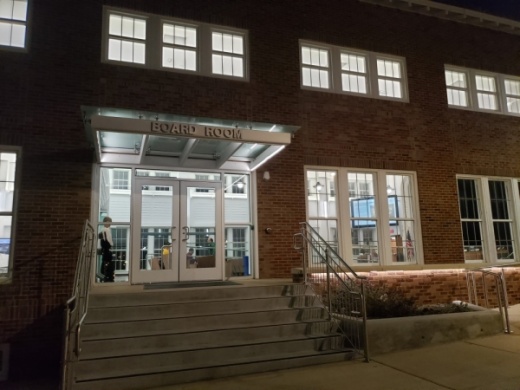TASB compensation consultants Erin Kolecki and Amy Campbell presented the report looking at district compensation to the board in a March 24 meeting.
Kolecki said the report includes a market pay review comparing common jobs in the district with like common jobs in nearby districts. The goal of the review is to get the district as close to market average pay rate as possible by offering three recommendations for guidance on employee pay, she said.
“We were looking for internal equity issues as well as external equity issues making sure employees are paid appropriately for the value of that job,” Kolecki said.
GISD was compared to 15 other area districts including Austin, Round Rock and Leander ISDs.
The report found that in the 2018-19 school year, GISD was nearly on par with median local market salaries particularly in its starting pay and at the 10-year and 15-year experience marks. The district fell below the median local market median at the 20-year experience by about $1,000, the report shows.
But in the 2019-20 school year, GISD fell below the median local market salaries across all experience levels for teachers, the report found.
The report found the starting teacher salary was $1,300 less than the local market median, about $1,600 less for those with five years of experience, about $1,000 less for those with 10 and 15 years of experience, and nearly $2,000 less than those with 20 years or more of experience. Kolecki said this was likely due to the implementation of House Bill 3, which gave school districts funding and required at least one-third go toward staff salary increases. While GISD gave a 5% pay raise at the midpoint to teachers which amounted to 74.58% of the overall $5.9 million allotment it received from the bill, it was a lower percentage than what was given in other area districts.
By comparison, Austin ISD gave a 6.8% increase, Round Rock ISD gave an 8% increase and Leader ISD gave a 7.7%, the report showed. GISD has 12,100 students, while AISD has 79,360 students; RRISD has 51,186 students; and LISD has 40,670 students, it said.
At the time, GISD Superintendent Fred Brent said the district’s priority was to give the maximum pay increase it could without cutting student programs and that since GISD is a smaller district than other area districts, it could not afford to offer higher raises without taking a deficit budget.
The report also found that central administration salaries were 2% above the local and state median market salaries, and 8% and 6% above the pay grade midpoint market salaries at the local and state level, respectively.
Kolecki said it is important to recognize that since central administration positions are held by a single person, job descriptions and experience vary more widely between districts and can be harder to compare.
GISD is, however, giving higher extra-duty stipends, or compensation given to staff for work provided beyond their job description, than the average market rate at $77 above market for athletics, $27 above market for performing arts and $587 above market for academics, the report found. Kolecki said TASB did not recommend lowering any stipends but to bring up others that are low.
The TASB report also offered three pay increase models recommendations for the board to consider.
The first is to offer a 2% pay increase for all jobs, which would have a $2.6 million impact on the budget. The second was to offer a 3% pay increase for all jobs, which would have a $3.45 million impact on the budget. The third was to offer a variable general pay increase with a 3.5% increase going to all teachers and auxiliary employees, a 2% increase going to all directors and a 1.25% increase going to heads of departments. The third would have a $3.77 million impact on the budget.
“These adjustments are intended to improve your market position and improve your experience differentials,” Kolecki said.
Campbell told Community Impact Newspaper the review is an optional TASB service done at the request of the board. While some districts conduct annual reviews, GISD’s last TASB compensation review was in the 2014-15 school year, Campbell said. She added that the district paid $18,500 for the review.
TASB began working on the review in January and presented its findings March 24, she said.
“Pay is always a touchy subject, and districts have limited funds, so they can’t always give compensation increases at the level they would like,” Campbell said. “Through these processes, [districts] are able to prioritize corrections to achieve their goal and have the greatest impact on employee morale and market competitiveness.”
For the full presentation, click here.





